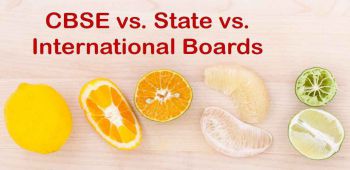Tripura Board Class 12 Chemistry Syllabus
SYLLABUS
SUBJECT : CHEMISTRY
(Class – XII)
CHEMISTRY
Total Page – 11
COURSE STRUCTURE
CLASS XII (Theory)
One Paper Time : 3 Hours Marks : 70
Unit Title Marks
I. Solid State 4
II. Solutions 5
III. Electrochemistry 5
IV. Chemical Kinetics 5
V. Surface Chemistry 4
VI. General Principles & Processes of Isolation of Elements 3
VII. p-Block Elements 8
VIII. d-and f-Block Elements 5
IX. Co-ordination compounds 3
X. Haloalkanes and Haloarenes 4
XI. Alcohols, Phenols and Ethers 4
XII. Aldehydes, Ketons and Carboxylic acids 6
XIII. Organic Compounds containing Nitrogen 4
XIV. Biomolecules 4
XV. Polymers 3
XVI Chemistry in Everyday life 3
Total 70
Unit I : Solid State (Periods 12)
Classification of solids based on different bindings forces : molecular, ionic, covalent and metallic solids, amorphous and crystalline solids (elementary idea), unit cell in two dimensional and three dimensional lattices, packing efficiency, calculation of density of unit cell, packing in solids, voids, number of atoms per unit cell in a cubic unit cell, point defects, electrical and magnetic properties. Band theory of metals conductors, semiconductors and insulators and n & p type semiconductors.
Unit II : Solutions (Periods 12)
Types of solutions, expression of concentration of solutions of solids in liquids, solubility of gases in liquids, solid solutions, colligative properties – relative lowering of vapour pressure, Rault’s law, elevation of boiling point, depression of freezing point, osmotic pressure determination of molecular masses using colligative properties, abnormal molecular mass, van’t Hoff factor and calculations involving it.
Unit III : Electrochemistry (Periods 14)
Redox reactions, conductance in electrolytic solutions, specific and molar conductivity, variations of conductivity with concentration, Kohlrausch’s Law, electrolysis and laws of electrolysis (elementary idea), dry cell – electrolytic cells and Galvanic cells; lead accumulator, EMF of a cell, standard electrode potential, Nernst equation and its application to chemical cells, Relation between Gibbs energy change and emf of a cell, fuel cells : corrosion.
Unit IV : Chemical Kinetics (Periods 12)
Rate of reaction (average and instantaneous), factors affecting rates of reaction; concentration, temperature, catalyst; order and molecularity of a reaction; rate law and specific rate constant, integrated rate equations and half life (only for zero and first order reactions); concept of collision theory (elementary idea, no mathematical treatment), Activation energy, Arrhenious equation.
Unit V : Surface Chemistry (Periods 8)
Adsorption – Physisorption and chemisorption; factors affecting adsorption of gases on solids; catalysis : homogeneous and heterogeneous, activity and selectivity : enzyme catalysis; colloidal state : distinction between true solutions, colloids and suspensions; lyophilic, lyophobic, multimolecular and macromolecular colloids; properties of colloids; Tyndall effect, Brownian movement, electrophoresis, coagulation; emulsion – types of emulsions, Elementary idea of nanomaterials.
Unit VI : General Principles and Processes of Isolation of Elements (Periods 8)
Principles and methods of extraction – concentration, oxidation, reduction electrolytic method and refining; occurrence and principles of extraction of aluminium, copper, zinc and Iron.
Unit VII : p-Block Elements (Periods 14)
Group 15 elements : General introduction, electronic configuration, occurrence, oxidation states, trends in physical and chemical properties, nitrogen – preparation, properties and uses; compounds of nitrogen : preparation and properties of ammonia and nitric acid, oxides of nitrogen (structure only) : Phosphorus-allotropic forms, compound of phosphorus : preparation and properties of phosphine, halides (PCl3, PCl5) and oxoacids (elementary idea only)
Group 16 elements : General introduction, electronic configuration, oxidation states, occurrence, trends in physical and chemical properties; dioxygen : preparation, properties and uses, classification of oxides, Ozone. Sulphur-allotropic forms; compound of sulphur : preparation, properties and uses of sulphur dioxide; sulphuric acid : industrial process of manufacture, properties and uses, other oxides and oxoacids of sulphur (structures only).
Group 17 elements : General introduction, electronic configuration, oxidation states, occurrence, trend in physical and chemical properties; compounds and halogens : preparation, properties and uses of chlorine and hydrochloric acid, interhalogen compounds, oxoacids of halogens (structures only).
Group 18 elements : General introduction, electronic configuration, Occurrence, trends in physical and chemical properties, uses.
Unit VIII : d and f Block Elements (Periods 14)
General introduction, electronic configuration, occurrence and characteristics of transition metals, general trends in properties of the first row transition metals – metallic character, ionization, enthalpy, oxidation states, ionic radii, colour, catalytic property, magnetic properties, interstitial compounds, alloy formation. Preparation and Properties of K2Cr2O7 & KMnO4.
Lanthanoids : Electronic configuration, oxidation states, chemical reactivity and lanthanoid contraction and its consequence.
Actinoids : Electronic configuration, oxidation states and comparison with lanthanoids.
Unit IX : Coordination compounds (Periods 12)
Coordination compounds – Introduction, ligands, coordination number, colour, magnetic properties and shapes, IUPAC nomenclature of mononuclear coordination compounds, Bonding (Werner’ theory. VBT and CFT) : structural and stereo isomerism, importance of coordination compounds (in qualitative inclusion of analysis, extraction of metals and biological systems).
Unit X : Haloalkanes and Haloarenes (Periods 12)
Haloalkness : Nomenclature, nature of C-X bond, physical and chemical properties, mechanism of substitution reactions. Stability of carbocations, R-S and D-L configurations.
Haloareness : Nature of C-X bond, substitution reactions (directive influence of halogen for monosubstituted compounds only, stability of carbocations R-S and D-L configurations)
Use and environmental effects of – dichloromethane, trichloromethane, tetrachloromethane, iodoform, freons, DDT.
Unit XI : Alcohols, Phenols and Ethers (Periods 12)
Alcohols : Nomenclature, methods of preparation, physical and chemical properties (of primary alcohols only) : identification of primary, secondary and tertiary alcohols; mechanism of dehydration, uses of methanol and ethanol.
Phenols : Nomenclature, methods of preparation, physical and chemical properties, Acidic nature of Phenols, Elctrophillic substitution reaction, uses of Phenols.
Ether : Nomenclature, methods of preparation, physical and chemical properties, uses
Unit XII : Aldehydes, Ketons and Carboxylic Acids (Periods 12)
Aldehydes and Ketones : Nomenclature, nature of carbonyl group, methods of preparation, physical and chemical properties and mechanism of nucleophilic addition, reactivity of alpha hydrogen in aldehydes; uses.
Carboxylic Acids : Nomenclature, acidic nature, methods of preparation, physical and chemical properties; uses.
Unit XIII : Organic compounds containing Nitrogen (Periods 10)
Nitro Compounds : General methods of preparation and chemical reactions.
Amines : Nomenclature, classification, structure, methods of preparation, physical and chemical properties, uses, identification of primary, secondary and tertiary amines.
Cyanides and Isocyanides : will be mentioned at relevant places in context.
Diazonium salts : Preparation, chemical reactions and importance in synthetic organic chemistry.
Unit XIV : Biomolecules (Periods 12)
Carbohydrates : Classification (aldoses and ketoses), monosaccharides (glucose and fructose), D-L Configuration, oligosaccharides (sucrose, lactose, maltose), polysaccharides (starch, cellulose, glycogen); importance of Carbohydrates.
Proteins : Elementary idea of ?-amino acids, peptide bond, polypeptides, proteins, primary structure, secondary structure, tertiary structure and quaternary structure (qualitative idea only), denaturation of protiens; enzymes. Lipids and hormones, their classification and functions.
Vitamins : Classification and function
Nucleic Acids : DNA & RNA
Unit XV : Polymers (Periods 8)
Classification – natural and synthetic, methods of polymerization (addition and condensation), copolymerization. Some important polymers : natural and synthetic like polythene, nylon, polyesters, bakelite, rubber, Biodegradable and non-biodegradable polymers.
Unit XVI : Chemistry in Everyday life (Periods 8)
1. Chemicals in medicines : analgesics, tranquilizers, antiseptics, disinfectants, antimicrobials, antifertility drugs, antibiotics, antacids, antihistamines.
2. Chemicals in food : preservatives, artificial sweetening agents, elementary idea of antioxidants
3. Cleansing agents : soaps and detegents, cleansing action.
You can also check here:
- Tripura Board Result
- Tripura Board Date Sheet
- Tripura Board Scholarship Exams




















Comments